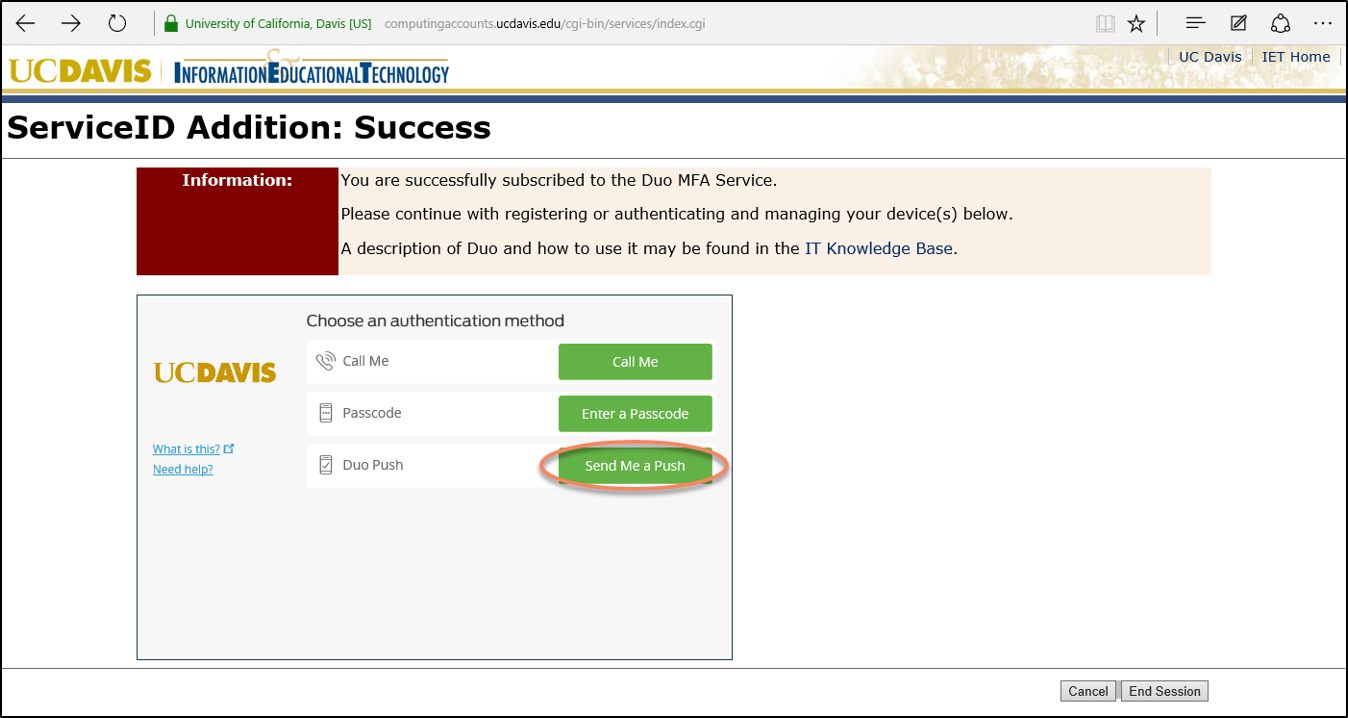

#DUO AUTHENTICATION PASSWORD#
Examples of third-party authenticator apps include Google Authenticator, Authy and Microsoft Authenticator some password managers such as LastPass offer the service as well. A big benefit of these apps is that they usually continue to work even without an internet connection.

#DUO AUTHENTICATION CODE#
Ī third-party authenticator app enables two-factor authentication in a different way, usually by showing a randomly generated and constantly refreshing code which the user can use, rather than sending an SMS or using another method. a security token or smartphone) that only the user possesses. Two other examples are to supplement a user-controlled password with a one-time password (OTP) or code generated or received by an authenticator (e.g. Something the user is: Some physical characteristic of the user (biometrics), such as a fingerprint, eye iris, voice, typing speed, pattern in key press intervals, etc.Īn example of two-factor authentication is the withdrawing of money from an ATM only the correct combination of a bank card (something the user possesses) and a PIN (something the user knows) allows the transaction to be carried out.Something the user knows: Certain knowledge only known to the user, such as a password, PIN, etc.Something the user has: Any physical object in the possession of the user, such as a security token ( USB stick), a bank card, a key, etc.The authentication factors of a multi-factor authentication scheme may include:

If, in an authentication attempt, at least one of the components is missing or supplied incorrectly, the user's identity is not established with sufficient certainty and access to the asset (e.g., a building, or data) being protected by multi-factor authentication then remains blocked. The use of multiple authentication factors to prove one's identity is based on the premise that an unauthorized actor is unlikely to be able to supply the factors required for access. For additional security, the resource may require more than one factor-multi-factor authentication, or two-factor authentication in cases where exactly two pieces of evidence are to be supplied. Simple authentication requires only one such piece of evidence (factor), typically a password. The resource requires the user to supply the identity by which the user is known to the resource, along with evidence of the authenticity of the user's claim to that identity.

MFA protects user data-which may include personal identification or financial assets-from being accessed by an unauthorized third party that may have been able to discover, for example, a single password.Ī third-party authenticator (TPA) app enables two-factor authentication, usually by showing a randomly generated and frequently changing code to use for authentication.Īuthentication takes place when someone tries to log into a computer resource (such as a network, device, or application). Multi-factor authentication ( MFA encompassing two-factor authentication, or 2FA, along with similar terms) is an electronic authentication method in which a user is granted access to a website or application only after successfully presenting two or more pieces of evidence (or factors) to an authentication mechanism: knowledge (something only the user knows), possession (something only the user has), and inherence (something only the user is).


 0 kommentar(er)
0 kommentar(er)
